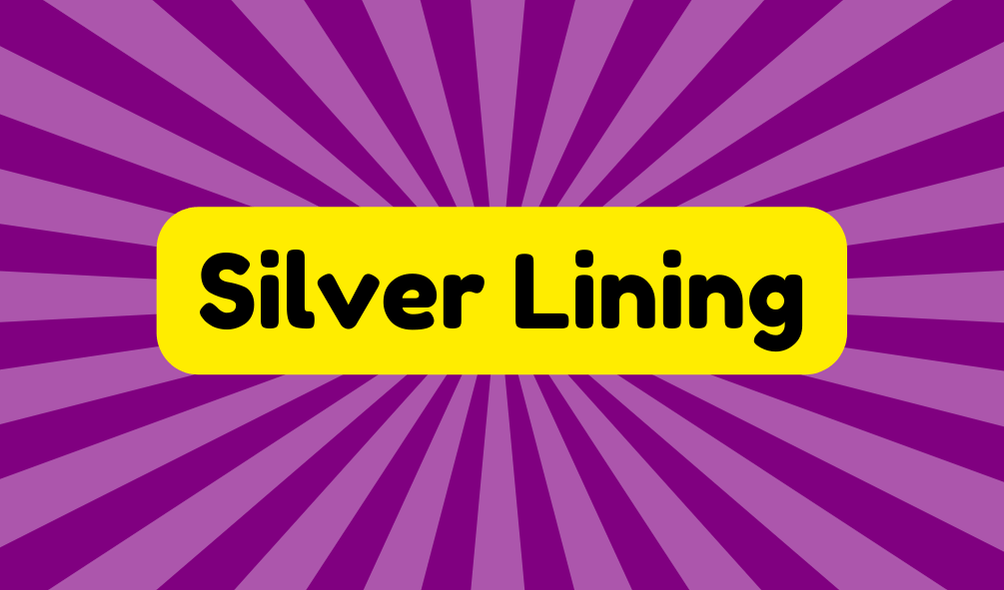The term "silver lining" means finding hope in tough times, a notion traced back to John Milton's 1634 writings. He suggests that challenges can highlight the positives, encouraging a proactive approach to adversity. You might say, "I missed the bus, but it saved me from getting stuck in traffic," illustrating this point. Synonyms like "positive outlook" or "hidden benefit" capture similar ideas. This perspective remains vital today, as people continuously face difficulties. Acknowledging both the negatives and the positives helps foster personal growth. If you're intrigued, you can discover more about its relevance in modern life.
Synonyms
When you think of "silver lining," several synonyms come to mind that capture its essence of finding optimism in tough times. A positive outlook doesn't always come easy, especially in adverse circumstances. However, these phrases might inspire you to shift your mindset during challenging moments:
- Bright side
- Hidden benefit
- Glimmer of hope
- Advantageous twist
- Upside potential
Exploring these synonyms can enhance your understanding of how optimism manifests in various situations. While it's tempting to ignore the gloom of adversity, recognizing these alternative expressions helps you appreciate the potential good that can emerge. So, as you navigate life's challenges, consider embracing these terms—they might just encourage you to uncover the brightness lurking beneath the clouds.
Example of Sentences
Finding silver linings can be essential during tough times, and there are countless examples illustrating how optimism can reshape your perspective. By maintaining an optimistic outlook, you might uncover hidden benefits, even in challenging situations. Here are some clear examples:
- Tough times often encompass numerous silver linings.
- A major surgery led to unexpected friendships forming.
- Discovering cash in a forgotten coat pocket shows hidden perks.
- Missing a bus resulted in avoiding a traffic jam.
- A canceled meeting allowed for a much-needed break.
These examples demonstrate that while adversity might seem bleak, it often holds the potential for growth and change. Staying open-minded and focusing on these hidden benefits can improve your resilience. Remember, it's about shifting your perspective.
Origin
Since its first recorded use in 1634 by John Milton, the expression "silver lining" has captured the essence of hope amid adversity. Milton's reference to a "sable cloud" highlights how negative situations can have unexpected benefits. This historical context emphasizes that even in distress, you can find reasons for optimism. Over the years, literary references have woven this phrase deeper into our cultural fabric, lending resilience a poetic touch. While it's easy to dismiss optimism as naivety, it's important to scrutinize this idea critically. Acknowledging the potential for growth amid challenges doesn't erase your difficulties; instead, it encourages you to seek out the positive amid the chaos. In our innovations, staying grounded while aiming high really matters.
Collocations
Building on the idea that optimism can emerge from adversity, examining the collocations associated with "silver lining" can deepen your understanding of this phrase. These phrases highlight how we connect "silver" with positive outcomes, despite challenges. Recognizing these collocations can help you navigate conversations around hope and resilience effectively. Here are some common silver lining phrases:
- Find the silver lining
- Look for the silver lining
- See the silver lining
- Silver lining in the cloud
- Silver lining story
How to Use in Everyday Language
Using the phrase "silver lining" in everyday language can add a touch of optimism to your conversations. It's essential to recognize, though, that while focusing on an optimistic outlook is important, it doesn't negate the reality of challenges. When you point out hidden benefits, you're not just glossing over difficulties; you're also inviting others to explore broader perspectives. For instance, instead of saying, "It's a disaster," try, "There's a silver lining; this could turn into a valuable lesson." Doing this can spark meaningful discussions about resilience and hope. Remember, embracing a silver lining doesn't mean ignoring the tough stuff. It's about balancing realism with the potential for growth, encouraging innovation even in adversity.
Why Is It Still Relevant Today?
In today's fast-paced world, the concept of a "silver lining" remains crucial as people face numerous challenges and uncertainties. While it's easy to dismiss this idea as naïve, cultural interpretations highlight how finding hope can fuel innovation and resilience. Modern applications of the silver lining philosophy encourage us to reassess obstacles, transforming setbacks into opportunities for growth. However, it's essential to approach this mindset realistically. Overemphasizing optimism might lead to ignoring genuine issues. By acknowledging both the harsh realities and potential positives, you're better equipped to navigate today's complexities. Embracing the silver lining pushes you beyond adversity, driving personal development and a more empowered approach to life's unpredictability. In this way, it holds lasting relevance in contemporary discourse.







